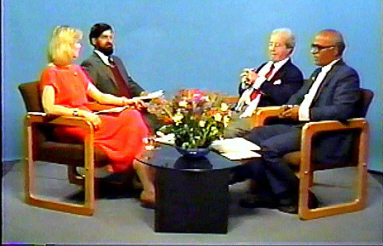
IS IT POSSIBLE ?
Intelligent Communities & Development
Intelligent Communities & Development
FURTHER NEWS:
ABOUT BOGATA, COLUMBIA
INCREDIBLY INNOVATIVE & INTELLIGENT URBAN PLANNING!
(This is a follow up to the previous article listed below entitled “Cities of Joy” about Bogata, Columbia’s Urban Development for
the good of the citizens living there. These excerpts are from the article in TREND entitled "Winka's World." See bottom for
link.)
…she (Winka Dubbeldam) has been tapped as lead architect and team-builder on a crowd funding project to revive
urban Bogata, Columbia. The work derives from a Columbian developer’s recent success in sourcing $200 million from
3200 donors for a new downtown high-rise. The money raised would seem to reflect residents’ furious appetite to play a
part as citizens in reshaping their city.
To begin work, Dubbeldam drew in the New York media consultancy and “bespoke event” marketing firm PSFK
(pronounced “piece of K”). The firm asked Bogata residents to answer 3,000 questions about their preferences on the
website miciudadideal.com/en. As of August 2013, nearly 3500 suggestions had already been submitted.
…There are 33 colleges or universities in Bogata, so the student population is expected to be at the front line of its
downtown renewal, much in the way that SCI-Arc students helped revitalize their Los Angeles neighborhood.
…In Latin America, the architect stresses, unstable currencies have engendered stable real estate markets, unlike in
the United States, where so many bad mortgages burst the housing bubble.
“Traditionally, the West thought it would save the Third World, but Latin America is fast growing a middle class that is
educated and ready to build cities,” Dubbledam says.
… She cites redirecting the Bogata River from a concrete bed to a more natural sluiceway. Using the dilapidated galerias
(interior shopping corridors) of the historic La Candelaria neighborhood to envision new shopping squares absent any
global big-box brands is another attractor in progress. Artists also live and work there. Twenty of them already
inhabit houses that a Columbian art collector has purchased. They pay rent in art, and the public comes
downtown for events that constellate around the budding colony.”
For the entire article: Ellen Berkovitch: Trend Magazine
(Winka Dubbeldam is known as an architect who utilizes state-of-the-art ecological principles in her designs. It seems Bogata citizens
want sustainability, while clients in Manhattan limit her use of ecological directives. This mindset could be one of the many reasons the
United States is falling behind many bright, creative minds in Asia, Africa, Central and South America and the Middle East. Americans
have stopped planning for the future and only look to immediate gain.)
CITIES OF JOY
Enrique Peñalosa, former mayor of Bogotá, believes that cities of the 'Third of the World' can offer us lessons about urban
quality of life.
ENRIQUE PEÑALOSA'S ideas stand as beacons of hope for cities of the non-industrialised world, which will absorb much
of the planet's population growth over the next half-century. These are places with the usual complications of rapid urban
expansion aggravated by deep poverty. Based on his experiences in Bogotá, however, Peñalosa believes it's a major
mistake to give up on these places, no matter how out of control their problems appear.
"If we in the Third of the World measure our success or failure as a society in terms of income, we would have to classify
ourselves as losers until the end of time," declares Peñalosa, a tall man with salt-and-pepper hair and trim beard. "With our
limited resources, we have to invent other ways to measure success. This might mean that all kids have access to sports
facilities, libraries, parks, schools or nurseries."
This is exactly what Peñalosa set out to do as mayor of Colombia's capital city. And the results were impressive enough
that Colombia finally got international press about something other than drug trafficking, guerrilla kidnappings and civil war.
Indeed, some observers claim that this city of 6.6 million offers practical lessons, not just for helping poor cities, but for
upgrading the quality of life in cities of the industrialised world.
In just three years 1998-2001 (term limits prevented him from seeking a second term) Peñalosa's Administration:
created the Trans-Milenio, a bus rapid transit system (BRT), which now carries half a million passengers daily on
special bus lanes that offer most of the advantages of a metro at a fraction of the cost;
built fifty-two new schools, refurbished 150 others and increased student enrolment by 34%;
established or refurbished 1,200 parks and playgrounds;
built thirteen libraries;
built 100 nurseries for children under five, and found permanent sources of funding;
improved life in the slums by bringing water to all households and buying land on the outskirts of the city to prevent
real-estate speculation and ensure that affordable housing will be built;
saw the murder rate fall by two-thirds;
reclaimed the sidewalks from motorists, who traditionally saw them as either a passing lane or a parking lot;
established 300 kilometres of cycleways;
created the world's longest pedestrian street (17 kilometres);
reduced traffic by 40% with a system where motorists must leave cars at home during rush hour two days a week;
inaugurated an annual car-free day; and
planted 100,000 trees.
NO-ONE CAN accuse Peñalosa of thinking small. As we sit in a room at New York University's Center for Latin American
and Caribbean Studies, looking out on the bustle of Greenwich Village below, he muses about the day when cities of the
Third of the World might surpass New York or Paris in terms of sheer joyfulness in urban living. As he confides this, his
reserved manner gives way to a broad and infectious grin, which I assume has proved very useful through the years in
helping him get things done.
"You must remember that Third of the World cities are still two-thirds unbuilt," he tells me, explaining that by 2050 most of
these cities will be three times larger than today, which means there is still a lot of city planning to do. "We can take
advantage of the mistakes and successes of other cities."
Opening the window and gazing down at sidewalks filled with people, he says, "I love New York. I feel so much energy
here. But there is so much more that you could do: pedestrian streets, more parks, bikeways, open up the waterfronts. The
old sections of European cities are very beautiful, but even they could be improved. They need a network of pedestrian
streets through the whole city, not just the centre, and they need more sports facilities and parks and green space.
"In Spanish we have this saying that it doesn't cost anything to dream," he notes. "So I say, let's dream! Let's just imagine
how you want your home to be. How you want your kids to live. Do you want to walk or drive to get bread? That's the basis
of thinking about cities."
A more serious look now crosses his face. "Ninety-nine per cent of Third of the World people have never seen a Dutch or
Danish city, where you see people on bikes everywhere. A city full of cars is not a good model for us. The images we get
from the US are a very damaging model," he continues. "We need to avoid undesirable developments such as urban
sprawl. People in the US now recognise there are problems with building cities for cars and not for people. Pedestrians
and bicyclists should be given as much importance as motor vehicles; even more so in Third of the World cities, where
most households don't own cars."
It's not that Peñalosa hates cars. It's that he loves lively public places where people of all backgrounds gather to enjoy
themselves and each other - places that barely exist in cities where the car is king. These places are even more important
in poor cities than in wealthy ones, he says, because poor people have nowhere else to go.
"We all need to see other people. We need to see green. Wealthy people can do that at clubs and private facilities. But
most people can only do it in public squares, parks, libraries, sidewalks, greenways, public transit," he declares, turning
back for another look out of the window.
GROWING UP IN the 1960s, when revolutionary fervour in South America was strong, Peñalosa became an ardent
advocate of social justice and income redistribution at an early age. He studied economics and history and later moved to
Paris to earn a doctoral degree in management and public administration. He returned home with aspirations of bringing
European-style city comforts to the working-class people of Bogotá. The experience of his early years out of school
working in an investment banking firm and dabbling in politics redefined his political views, as seen by the title of his first
book, Capitalism: The Best Option. But this does not mean, he hastens to tell me, that he abandoned the quest for social
justice.
"We live in the post-Communism period, in which many have assumed equality as a social goal is obsolete," he explains.
"Although income equality as a concept does not jibe with market economy, we can seek to achieve quality-of-life equality.
Urban policy can be a powerful means to achieve equality in quality of life."
So over the last twenty years Peñalosa has been looking for new ways to level the playing field between poor citizens and
wealthier ones. "The least a democratic society should do", he says, "is to offer people wonderful public spaces. Public
spaces are not a frivolity. They are just as important as hospitals and schools. They create a sense of belonging. This
creates a different type of society- a society where people of all income levels meet in public space is a more integrated,
socially healthier one."
"In Bogotá, our goal was to make a city for all the children. The measure of a good city is one where a child on a tricycle or
bicycle can safely go anywhere. If a city is good for children, it will be good for everybody else."
Peñalosa has been taking this message throughout the world in lecture tours sponsored by the World Bank, the Institute
for Transportation and Development Policy (ITDP - a New York-based group promoting sustainable transportation in the
Third of the World), and Interface for Cycling Expertise (I-CE), a group based in Utrecht, the Netherlands promoting bike
transportation.
"You cannot overestimate the impact Peñalosa has had, on a personal level, in ten or twelve countries," notes Walter
Hook, director of ITDP. "He takes these ideas, which can be rather dry, and speaks emotionally about the ways they affect
people's lives. He has the ability to change how people think about cities."
Bogotá's BRT system is of particular interest to public officials in the Third of the World, who want to defuse traffic jams
but don't have funds to build a metro or tram system. Hook gives Peñalosa major credit for the decision to build a new
busway in Jakarta, Indonesia. He also played a role in getting things rolling for busways in Beijing, Delhi, Cape Town, Lima
and Dar es Salaam, as well as ambitious cycleway projects in Mexico City, Cape Town and Dakar.
AFTER SEVERAL HOURS of conversation, interrupted once by university maintenance men coming in to fix the loose
window that Peñalosa favours for surveying the city below - a moment in which I saw the mayor's charm and
persuasiveness in full blossom as he enquired whether they were going to seal it permanently shut - it is now time for
lunch. Peñalosa tentatively suggests we could go to the faculty club, a presumably swank spot. I counter-offer that
Washington Square Park is only two blocks away, and see a smile light up his face. We swing by a local deli, where
Peñalosa holds his own in simultaneous Spanish conversations with two employees from the Dominican Republic while
continuing to answer my questions in English, and then stroll over to Washington Square to enjoy a lovely summer
afternoon.
The park, the hub of Greenwich Village, was saved from plans to run a highway right through it by protests from the
neighbourhood. As Peñalosa and I sit down on a bench with our sandwiches, we stop talking for the first time all day and
just watch the show. Children play. Mothers chat. Students read. Construction workers sip coffee. Business executives
nap. Street people sing. When a young woman glides by on her bike, Peñalosa nods his head and laughs. "Bikes are a
wonderful thing in cities. You can watch all the other people on their bikes, meet your friends, stop to talk."
"All these issues we're talking about are from the soul," he adds. "Economics, urban planning, ecology are only the
means. Happiness is the goal. Places like this make people happy. We have a word in Spanish, ganas, which means 'a
burning desire'. I have ganas about public life…"
Just then a young couple walk by pushing their bikes.
He looks over at me, his brown eyes shining. "Have you seen all the bikes in Copenhagen?"
In preparing this article, our editorial team discussed the use of the term 'Third World', which in some cases can seem
derogatory. From research we were interested to find that the term is actually a translation error: "The term was coined in
French as Tiers Monde ('Third of the World'), but it has since been mistranslated to mean 'third in order'. No order is
implied by Tiers Monde (if so, it would have been Troisième Monde). The term was used during the Cold War and the
originator of the term noted simply that about a third of the countries of the world were neither capitalist nor communist in
their political commitment. They were mostly the poorer countries of Africa, Asia and Latin America." As a mark of respect
for the Third of the World countries who are still able to choose a more sustainable political future, from now on we will use
the term as it was originally envisaged.
Jay Walljasper is Associate Editor of Ode.
This article is reprinted courtesy of Resurgence magazine - at the heart of earth, art and spirit. To buy Resurgence, read further articles
online or find out about The Resurgence Trust, visit: www.resurgence.org
All rights to this article are reserved to Resurgence, if you wish to republish or make use of this work you must contact the copyright
owner to obtain permission.
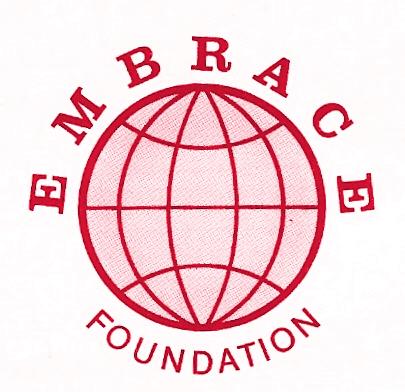
Embrace Foundation Retreat Center
Embrace.Foundation (skype messaging) - 011+1+212.675.4500 (New York)
Click to Email Us
Embrace Foundation is a non-profit,
educational foundation set up to create
better understanding between people of
different religions, cultures, traditions and
world philosophies.
Embrace Foundation works to bring leaders
and scholars of world-wide religions,
cultures and philosophies together by
sponsoring forums, seminars, lectures and
developing an international exchange
program. Embrace Foundation is particularly
concerned with reaching the world public
through the media.
Purpose

Donations
Embrace Foundation is an all volunteer
organization. All donations go directly to
programs.
Embrace Foundation does not and has
never given permission to any outside
organization to solicit or receive
contributions on our behalf.
All donations should be made to Embrace
Foundation only via Paypal or by mail. All
donations are tax deductible. A receipt will
be emailed to you. Please click on the Pay
Pal link below to Donate.

Travel As An Interfaith Act
Embrace encourages all who can do so, to
learn about other traditions and cultures by
traveling as “Grassroots Diplomats.” We
hope that people every where become life
long students of our world-wide humanity.
“ In every man there is something wherein I
may learn of him, and in that I am his pupil.”
R.W.Emerson


Embrace Humanity

Great Visions - TV
Guests are: Swami Satchidananda &
the Rt. Reverend Dean Parks Morton
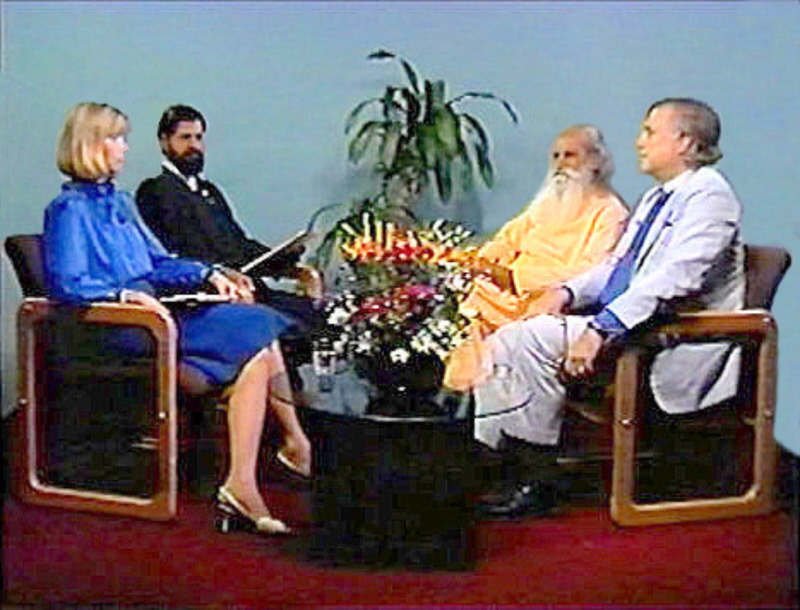
Embrace Archives
Limited Editions Gallery
Umrah - Jordan
Embrace Sacred Places

Monastery of Bahira - Syria
Embrace Foundation Universal
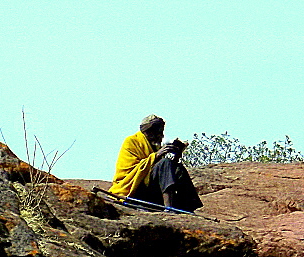
Monk Reading - Ethiopia
Thank you for making a donation.
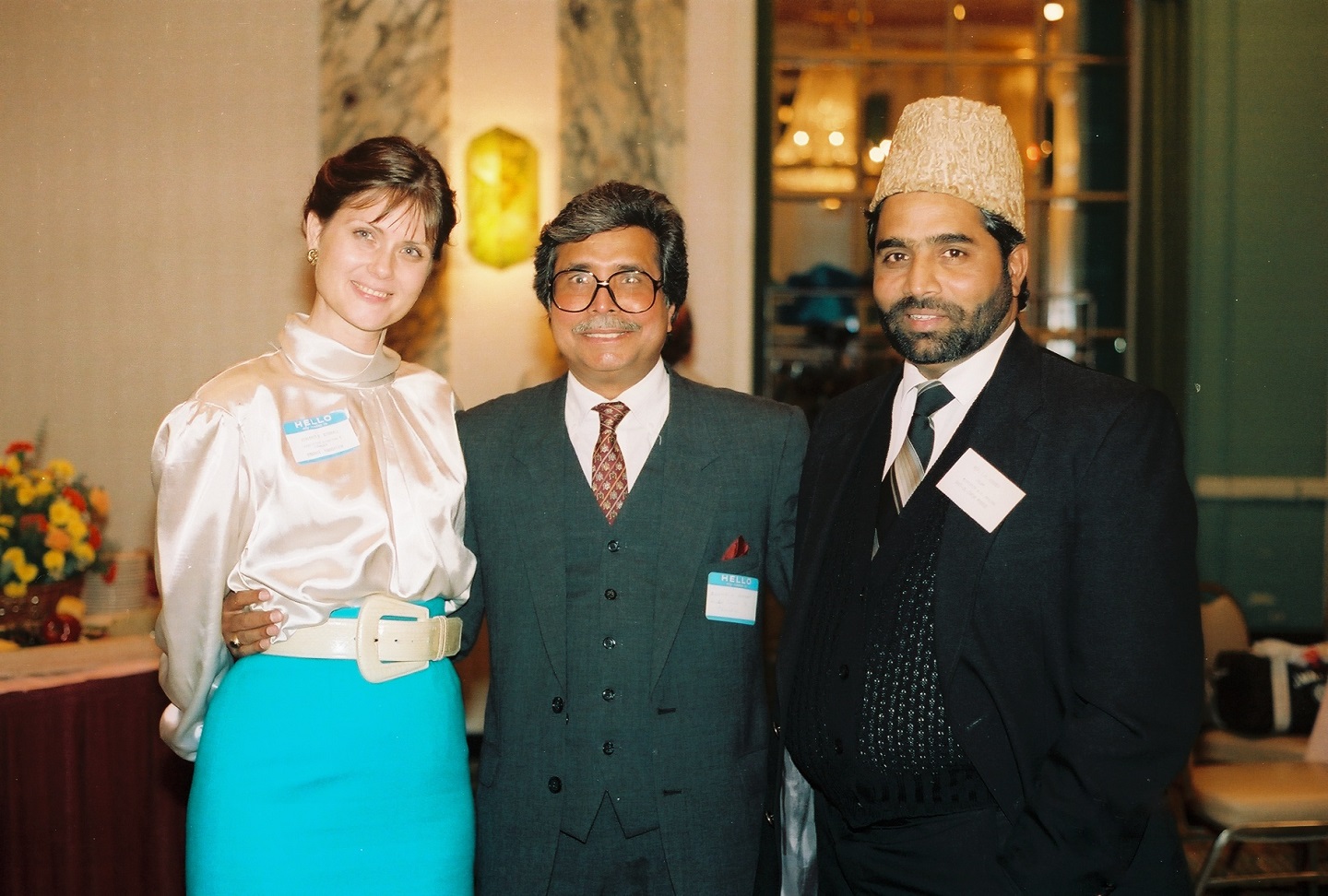
Virginia (Embrace), Dr.Anwar Barkat (World Council of Churches, UN) & Imam I.H. Kauser
Embrace Archives
Great Visions TV
Anne-Stuart & Ajata (Hosts), with Rabbi Gelberman & Dr.Jayaraman
Anne-Stuart & Ajata (Hosts), with Rabbi Carlebach & Imam Kauser
Embrace Foundation International
TALL IS BEAUTIFUL
. . . By 2050, the United States can expect to add as many as 200 million people. Demographers predict that they'll require
90 million houses and 140 billion square feet of office and other nonresidential space-the equivalent of replacing all the
country's existing buildings. If we keep building in the way we do now, suburbs will gobble up a New Mexico-size amount of
open space in the next 40 years. More suburbs mean more freeways and more cars, which means that by mid - century,
Americans will clock 7 trillion miles per year-twice as much mileage as we do now. The alternative to this metastasizing,
car-dependent sprawl is population density. And that means squeezing more people into cities and inner suburbs like
Alameda. According to the Greenbelt Alliance, the Bay Area could absorb another 2 million residents by 2035 without
expanding its physical footprint.
Cities are also essential to stemming climate change. As Kaid Benfield, director of the Natural Resources Defense
Council's Smart Growth program explains, "The city is inherently energy efficient. Even the greenest household in an
outlying location can't match an ordinary household downtown." Heating an apartment uses as much as 20 percent less
energy than heating a single - family home of the same size. Promoting infill development-the practice of filling empty urban
space or replacing older buildings with bigger ones-instead of building more subdivisions could effectively conserve the
amount of energy produced by 2,800 power plants and could prevent some 26 trillion miles of driving. All told, if the United
States focuses on increasing urban density, our greenhouse gas emissions in 2050 could be as much as 20 percent lower
than they'd be in the sprawl scenario.
......
Determined to make cities more livable, environmentalists have promoted parks and public transit, fought freeways and
factories, and portrayed developers as the ultimate bad guys. But these well - intentioned efforts to curb the Robert Moses-
style excesses of urban development had unintended consequences. Strict limits on building height and attempts to
squeeze ever-larger concessions from urban developers (but not suburban ones) drove up the cost of housing in many
cities-sending builders and home buyers looking for open space. "It's a situation that has unfairly favored sprawl," says
NRDC's Benfield. SunCal developer Pat Keliher says that many of his colleagues simply avoid the cost of battling urban
skeptics by building on out-of-town farmland: "It's the old adage-cows don't talk."
Zimbabwe creates fund for technology innovation
Posted on Tuesday, 15 March 2016
By Janet Shoko
Zimbabwe has set up a $25 million fund supported by all registered telecommunications companies to promote
technological innovation.
Information Technology minister Supa Mandiwanzira said the companies would contribute one percent of their revenues to
the Universal Services Fund. The Post and Telecommunications Authority of Zimbabwe (POTRAZ) - the industry's
regulator would manage the fund.
"As a progressive government, which promotes access to technology, we were averse to the idea of stifling these
technologies or banning them but rather we should look at an opportunity to develop our own young Zimbabweans who
should develop software and programmes that counter those that are coming from Silicon Valley," Mandiwandzira told a
technology symposium in Harare on Monday.
He said the government wanted locals to emulate innovation that characterised Silicon Valley in the United States. Silicon
Valley, which is in the United States, is the home to many of the world's largest high-tech companies as well as start-up
companies.
Mandiwanzira said the fund was in response to calls by the local telecommunications sector for government to either ban
or stifle use of over the top services (OTTs) such as WhatsApp, Viber and Skype.
The telecoms operators say the OTTs are eating into their revenues but the minister said banning them would not solve the
problem. He said only innovation would ensure that local telecommunications companies remained viable.
Mandiwandzira said an agreement was reached that industry players would each contribute one percent of the revenue
they generate into the fund. "We expect to have between $20 and $25 million into this fund within the next 24 months,"
Mandiwanzira said.
Zimbabwe's mobile network operators have in the past generated the bulk of their revenues from provision of calling and
messaging services, which cost around 24 cents per minute and eight cents per message respectively.
However, the emergence of OTT platforms has given respite to millions of Zimbabweans struggling to pay for a range of
telecommunications services in one of the most expensive markets in southern Africa.
The latest available annual revenue statistics from POTRAZ show the sector registered $907 million revenue in 2014.
Read the original article on Theafricareport.com : Zimbabwe creates fund for technology innovation | Southern Africa
- Great Visions TV
- Inspirations
- Media
- Possibilities
- Astrophysics, Quantum Physics & The Nature of Reality
- Deconstructing Nuclear Fission & Nuclear Waste
- Defense Industry as Community Builders
- Defense Industry As Energy Providers
- Global Water Shortages
- Innovative Technology
- Intelligent Communities & Development
- Pentagon & Non-Western Nations
- Recreating
- Resource Based Population
- Sharing Community Resources
- Protecting Human Rights
- Spiritual Ecology
- Syria
- Write to Us
